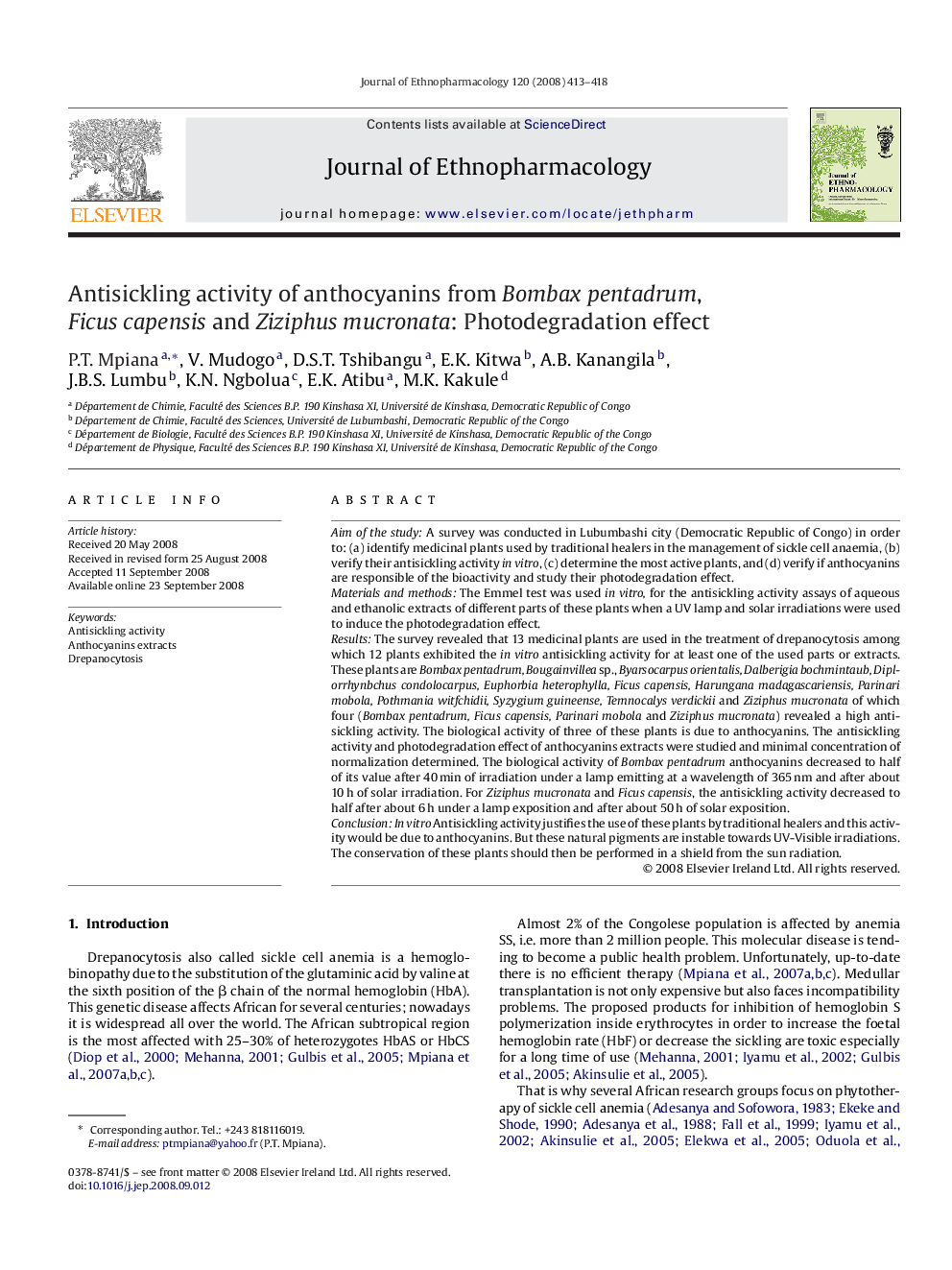| کد مقاله | کد نشریه | سال انتشار | مقاله انگلیسی | نسخه تمام متن |
|---|---|---|---|---|
| 2546313 | 1560409 | 2008 | 6 صفحه PDF | دانلود رایگان |

Aim of the studyA survey was conducted in Lubumbashi city (Democratic Republic of Congo) in order to: (a) identify medicinal plants used by traditional healers in the management of sickle cell anaemia, (b) verify their antisickling activity in vitro, (c) determine the most active plants, and (d) verify if anthocyanins are responsible of the bioactivity and study their photodegradation effect.Materials and methodsThe Emmel test was used in vitro, for the antisickling activity assays of aqueous and ethanolic extracts of different parts of these plants when a UV lamp and solar irradiations were used to induce the photodegradation effect.ResultsThe survey revealed that 13 medicinal plants are used in the treatment of drepanocytosis among which 12 plants exhibited the in vitro antisickling activity for at least one of the used parts or extracts. These plants are Bombax pentadrum, Bougainvillea sp., Byarsocarpus orientalis, Dalberigia bochmintaub, Diplorrhynbchus condolocarpus, Euphorbia heterophylla, Ficus capensis, Harungana madagascariensis, Parinari mobola, Pothmania witfchidii, Syzygium guineense, Temnocalys verdickii and Ziziphus mucronata of which four (Bombax pentadrum, Ficus capensis, Parinari mobola and Ziziphus mucronata) revealed a high antisickling activity. The biological activity of three of these plants is due to anthocyanins. The antisickling activity and photodegradation effect of anthocyanins extracts were studied and minimal concentration of normalization determined. The biological activity of Bombax pentadrum anthocyanins decreased to half of its value after 40 min of irradiation under a lamp emitting at a wavelength of 365 nm and after about 10 h of solar irradiation. For Ziziphus mucronata and Ficus capensis, the antisickling activity decreased to half after about 6 h under a lamp exposition and after about 50 h of solar exposition.ConclusionIn vitro Antisickling activity justifies the use of these plants by traditional healers and this activity would be due to anthocyanins. But these natural pigments are instable towards UV-Visible irradiations. The conservation of these plants should then be performed in a shield from the sun radiation.
Journal: Journal of Ethnopharmacology - Volume 120, Issue 3, 8 December 2008, Pages 413–418